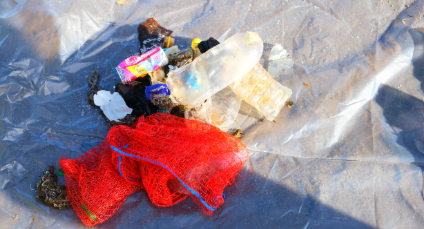Solution of the Impact of Scattering Litter in Natural Public Spaces

Introduction
The natural beauty of public spaces is progressively damaged by the negligent behaviour of people through actions that are non-civic, such as leaving a huge amount of litter behind them on coastal roads, beaches, and sunset viewpoints, comprising cans, plastic bottles, and plastic bags. this conduct exhibits an enigma: people go to these spots to appreciate and value their beauty and splendour, but actively participate in their degradation. Tackling this problem is essential to sustaining the environment and preserving the aesthetic and environmental value of these parts.
Problem Overview
- Ecological Degradation
- Marine ecosystems and land are polluted by litter dropped by visitors
- Wildlife is threatened by consumption or becoming intertwined in waste.
- Non-biodegradable resources and ingredients, principally the accumulation of Plastics over time.
- Visual and Social Impact
- The Aesthetic attraction of natural locations is weakened.
- Cluttered spaces discourage sensible visitors from visiting these attractions.
- The behaviour nurtures an ethos of irresponsibility and neglect.
- Self-contradictory Attitudes
- Sightseers frequently demonstrate appreciation for nature whilst participating in its destruction.
- Deficiency of accountability and environmentally friendly education promotes this behaviour.
Proposed Solutions
- Public Education and Awareness
- Campaigns: Initiate ecological awareness and understanding campaigns employing impactful visuals and messaging.
- Schools: Integration of eco-friendly responsibility into the educational curriculum.
- Social Media: Usage of digital platforms to foster and advance responsible and sustainable sightseeing and communicate cleanup attempts and efforts.
- Waste Management Organisation
- Bins: Installing recycling bins, which are visibly labelled and repeatedly maintained
- Signage: Exhibition multilingual signs with clear directions and communications about environmental effect.
- Behavioural Involvements
- Pushing Techniques: Utilising behavioural science strategies like:
- Social rules (e.g., “Please, take your trash with you.”)
- Visual signals and notices nearby general meeting spots.
- Implementation Measures
- Penalties and Fines: Implementation and enforcement of dropping litter fines.
- Monitoring: Employment of frequent patrols, rounds and surveillance.
- Community Commitment
- Volunteer Cleanings: the community’s organisation for awareness campaigns and clean-up events connecting local organisations, residents, and visitors.
- Approve-a-Spot: Allowing schools and local businesses to “adopt” picturesque scenic parts and be responsible for their maintenance, upkeep and preservation.
- Business Obligation and Responsibility
- Encourage and inspire local businesses near natural attractions, such as beaches and parks, to:
- Practice the usage of eco-environmental packaging.
- Proposal of discounts for returning bottles and cans.
- Retain spotlessness, sanitation, and hygiene around their properties.
- Accessibility Control and Design
- Limit car accessibility to deter littering from cars.
- Demarcation signage for “protected beauty spots” to raise awareness of environmental sensitivity through informational signage.
Conclusion
The problem of littering in picturesque public spaces is both cultural and ecological. It needs a synchronised and organised response that encompasses education, community participation, enforcement and infrastructure. Transforming behaviours and attitudes is fundamental for sustainable success. Where everyone has a role to perform in guarding the natural beauty.
